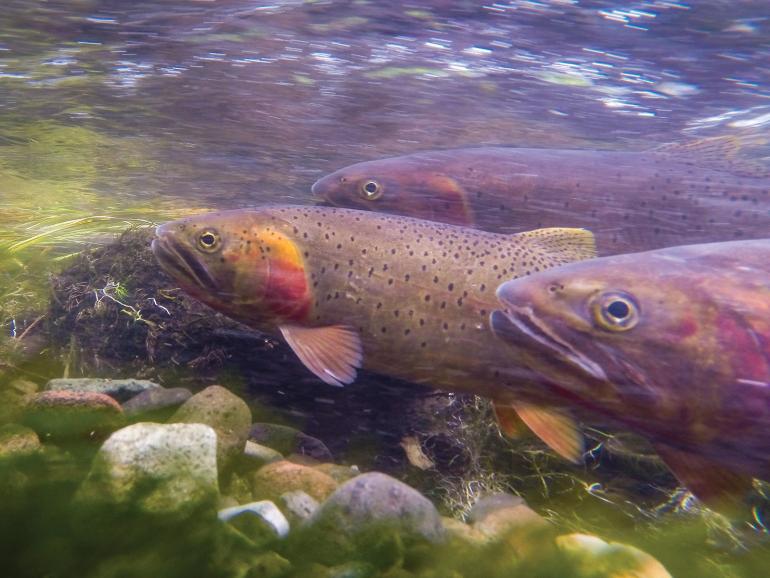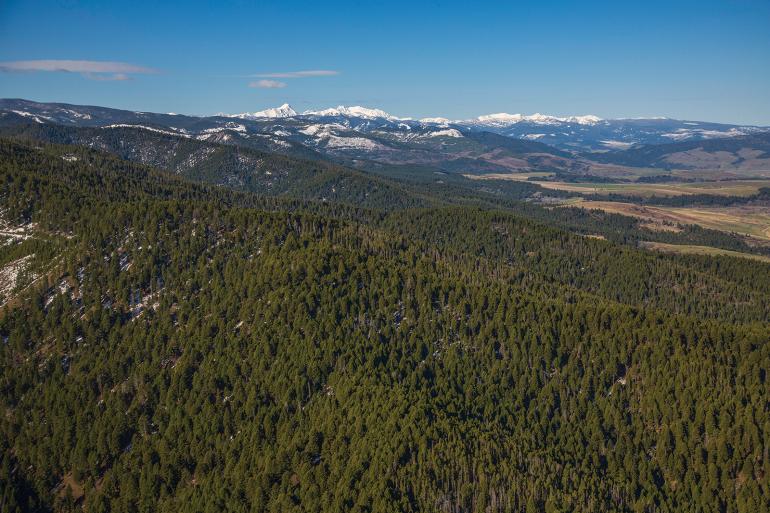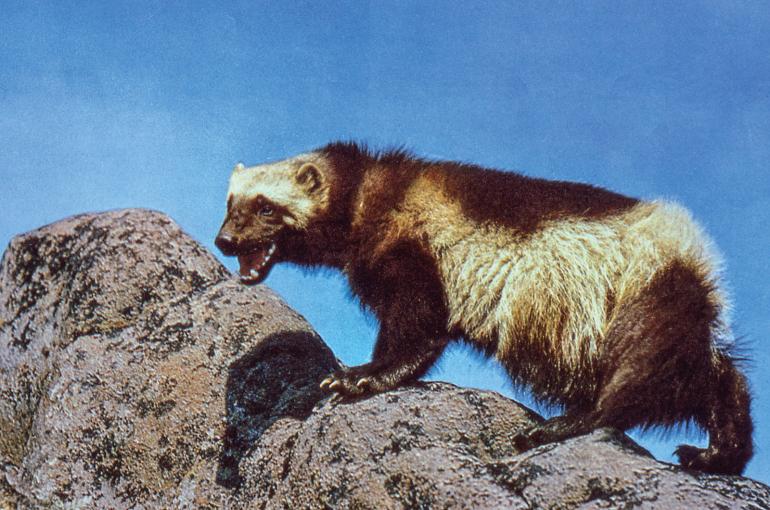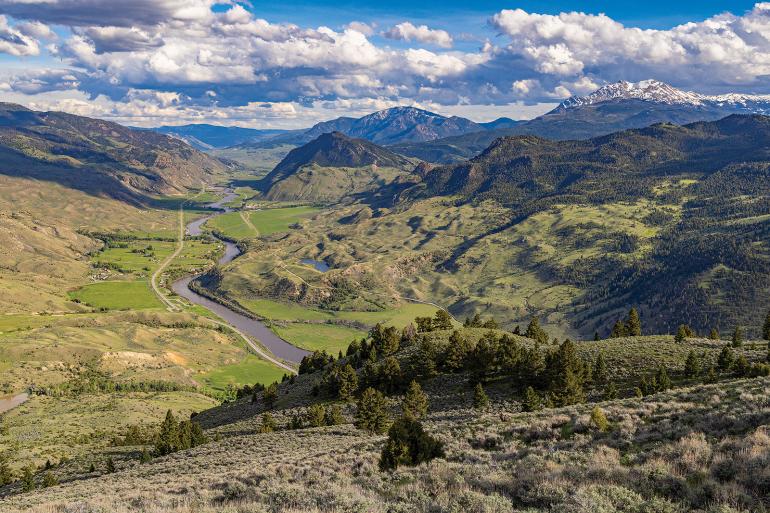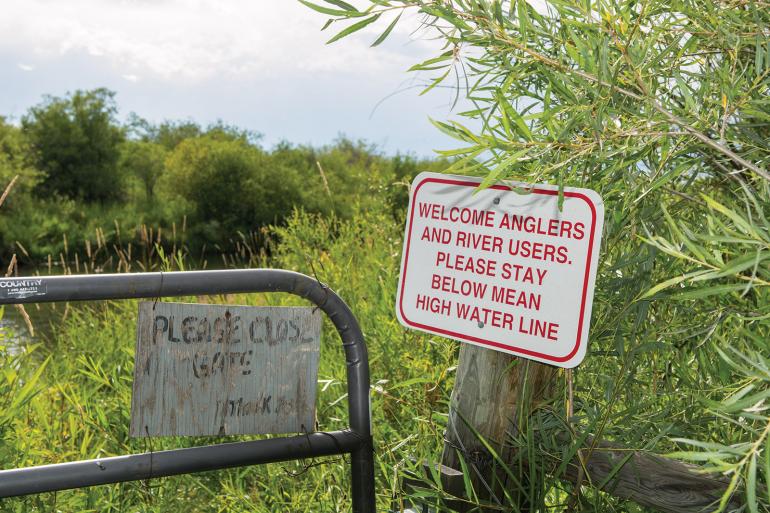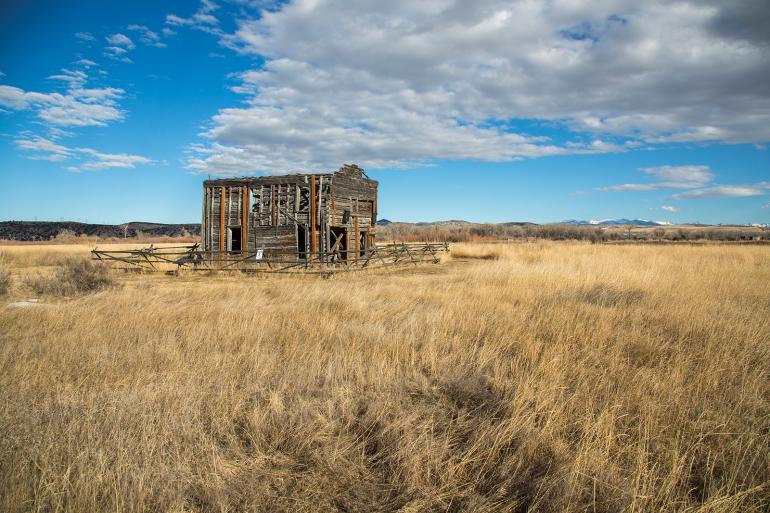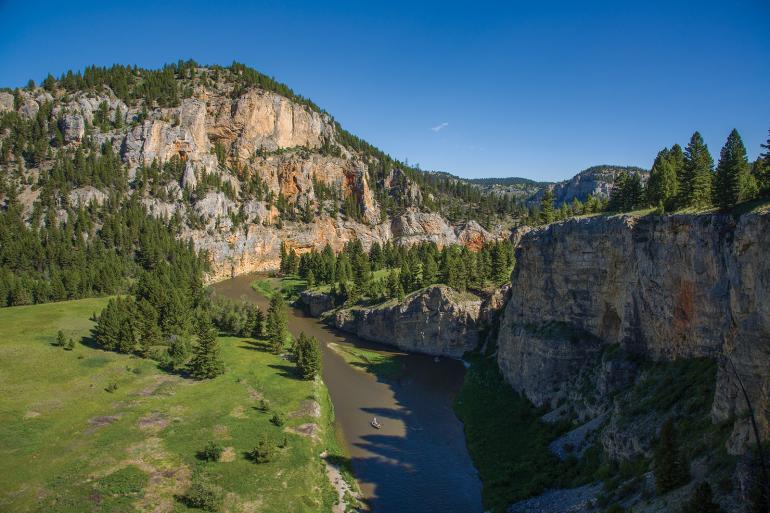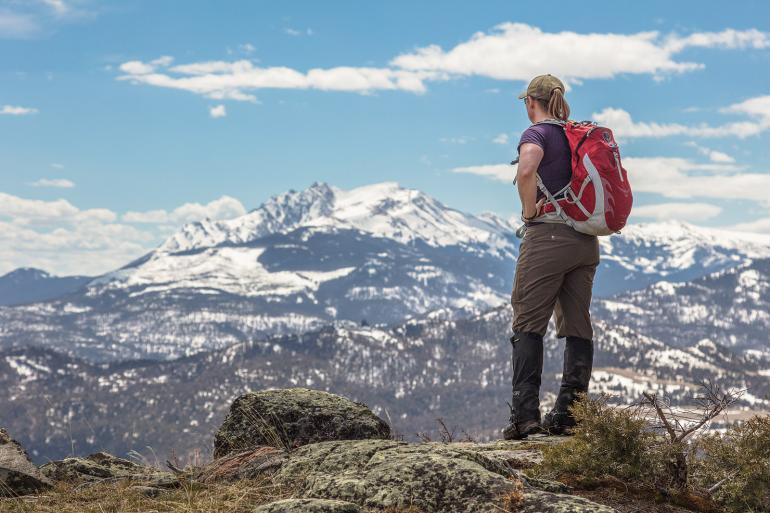Land Chops
Southwest Montana conservation updates.
Conservation never sleeps. Sure, it might move slowly at times, but especially here in southwest Montana, people and organizations are constantly chugging along, making hard-earned progress to protect this place we call home. Here are a few recent updates from around the region. —the editors
Wild-Trout Semi-Centennial
by Everett Headley
When Dick Vincent first proposed ending the supplemental stocking of trout into Montana rivers in the 1960s, the response was divisive. Yet, in the five decades since, his suggestion has become the standard for Montana Fish, Wildlife & Parks (FWP). In that time, Montana has become the premier destination for fly fisherman seeking a pure experience in Elysium waters.
Vincent’s early work on the Madison River identified that the stocking of catchable-size trout impeded natural reproduction. Based on anecdotal evidence, he proposed a three-year study: the Varney section of the river would remain unstocked, while the Norris stretch would act as a control. O’Dell Creek, which had not previously been stocked and was regarded as a good fishery, would also receive hatchery fish. The department, commission, and local businesses immediately and loudly voiced concerns about experimenting on such prized waters. However, the study was approved, and in 1970 and the following years, the results were staggering. A near two-fold increase in larger trout was seen in the Varney portion, and the increase continued throughout the study’s three-year duration. O’Dell Creek, however, experienced a catastrophic decline in large fish.
What followed was a revolution in the thinking and approach of fisheries management by FWP. “By far, what is the most benefit from this shift in policy is the new culture of science within the agency,” summarizes Clayton Elliot, Montana Trout Unlimited’s director of conservation and government affairs. “Montana can be proud for leading the nation in this effort of putting the resource first and politics second.”
Montana’s fisheries continue to benefit from FWP’s wild-fish research. Matt Jaeger, fisheries biologist for the Ruby and Beaverhead watersheds, is evaluating wild and natural recruitment in the Clark Canyon and Ruby reservoirs as well (although the wild fish initiative currently only applies to rivers). “Despite stocking efforts in these waters, natural recruitment continues to far surpass stocked trout. In each year we checked, natural recruitment attributed to at least 50 percent, and as much as 90, of the next generation.” Lakes and reservoirs have many variables year to year that affect spawning; and drought and decreased streamflow from upstream tributaries could eliminate an entire year’s hatch. While stocking reservoirs prevents generational losses, rivers in the state prove quite a bit more stable with wild reproduction.
Over the last half-century, the primary lesson learned has been the need to protect and enhance wild-trout habitat. Good fishing comes from good fisheries. “Stocking is the get-rich-quick scheme, but in the end, you find you have less gold,” concludes Elliot. And gold we have plenty of in Montana’s rivers; we can only hope we’ll be mining it for years to come.
Saving Southwest Montana
by Corey Hockett
Last fall, the U.S. Fish & Wildlife Service (USFWS) proposed a large-scale conservation project across the bulk of southwest Montana. The Missouri Headwaters Conservation Area seeks to protect rural spaces and agricultural practices through easements that restrict future commercial and residential development. Spanning five counties (Deerlodge, Silver Bow, Madison, Jefferson, Beaverhead) and 5.7 million acres, the project boundary stretches north from the Idaho border to Whitehall and west to the Continental Divide, with the Madison Valley making up the area’s eastern flank. Within this swath, the USFWS has identified 250,000 private land acres eligible for conservation easements. Note that little word “private.” Every acre proposed is privately held and available easements would be sold by willing landowners only. The restrictions of said easements apply only to subdivision and commercial development. The idea is to preserve current farming and ranching operations while keeping wildlife habitat intact across large landscapes. The USFWS would use money from the Land & Water Conservation Fund to obtain the easements.
When the proposal was announced in September, a multitude of bipartisan conservation organizations sang its praises including the Nature Conservancy, Backcountry Hunters & Anglers, and the Theodore Roosevelt Conservation Partnership. However, Montana representative Matt Rosendale and attorney general Austin Knudsen accused the USFWS of trying to make a “land grab” through a “covert deal”—despite the fact that all easements would be bought and sold on a volunteer basis, just as it goes for the rest of free-market America.
Four public meetings were held in the fall, and now the USFWS is in the process of putting together a draft plan. Public review and comment will be released this spring. Keep your eyes out and weigh in.
Wolverine Protections
by Eli Fournier
This year marks the 50th anniversary of the Endangered Species Act (ESA), and here in Montana, it’s had quite the impact. Notably, it’s resulted in the remarkable recovery of wolves and grizzlies in the Rocky Mountain West, bringing both back from the verge of obliteration. And now, in the act’s 50th year, wolverines are being added to the list of protected species.
On November 30, the United States Fish & Wildlife Service (USFWS) announced the new protections for wolverines, listing the species as “threatened” under the ESA. The action resulted from lawsuits on behalf of the Center for Biological Diversity and WildEarth Guardians, forcing the USFWS to re-commence the listing process for wolverines—something that had been happening on and off for the last 20 years. The official listing prohibits the harvest of wolverines, with a notable exception for animals killed as bycatch related to legal wolf-trapping activities.
While many Montanans and conservation groups are celebrating the protections, some think the wolf-trapping exception is unacceptable. “We appreciate that the Fish & Wildlife Service finally listed wolverines as threatened,” Mike Garrity, executive director of the Alliance for the Wild Rockies, said in a press release, “but their 4d rule, which allows trapping in wolverine habitat, is a road map for extinction, not recovery.” Currently, there are only an estimated 318 animals in the Lower 48.
Already in the last year, conservation groups in Montana used the incidental take of grizzly bears—another threatened species—to put an injunction on Montana’s wolf-trapping season, shortening it by over 50 percent. It’s likely that conservation groups will use wolverine protections to do the same, despite the fact that the USFWS expects wolf trapping in Wyoming and Idaho “to have little effect on wolverines at a population level, as long as trapping is done in a manner to limit wolverine bycatch.” Currently, most western states already have restrictions in place to limit accidental wolverine harvest, such as trap size and tension limits.
Also in opposition to the listing is our own wildlife agency. In January, FWP notified the public of their intent to sue the USFWS, on the assertion that wolverines are doing just fine in the Northern Rockies, and the listing is unnecessary. But regardless of future legal action and protections, an ESA listing is far from a silver bullet for the species. Currently, their biggest threat is habitat loss resulting from climate change. Loss of snowpack limits the animals’ mobility, and potentially their ability to scavenge for prey as a result. If wolverines are to make a big recovery, they’re going to need all the help they can get—and an ESA listing is a great place to start.
Gallatin Partnership
by Corey Hockett
The Gallatin Range is one of Bozeman’s most beloved areas. One thing everyone seems to agree on is that the place deserves protection, but ideas on how to safeguard it range from improving trail access to designating it as unbridled Wilderness. In 2016, the Gallatin Forest Partnership (GFP) was born, a collaborative body representing ideals from over a dozen outdoor interest groups intent on finding some common ground. The coalition penned a 40-page document outlining a management strategy for shared values including ecological, economic, social, recreational, and perhaps most importantly, wilderness character.
The agreement calls for protections on 250,000 acres of the Greater Yellowstone, including expanding the Lee Metcalf Wilderness in both the Gallatin and Madison ranges. GFP also recommends specific chunks be designated as Wildlife Recreation Areas where current recreational privileges (read: mountain biking) are grandfathered in with a permanent protection plan. This nuanced approach opposes new trail construction in the backcountry, supports improved trails in the front country, and encourages continued closures on all non-motorized trails.The agreement also advocates for adding a new trail in North Dry Creek to improve mountain-bike accessibility from Livingston, as well as building another segment to connect the North Fork of Trail Creek to the path running east from Mystic Lake. Montana Wild and the Livingston Bike Club are working on the permitting and funding process. Learn more at gallatinpartners.org.
Public-Lands Proclamation
by Eli Fournier
On November 28, the Public Land Water Access Association penned a letter to Dustin Temple expressing concerns about FWP’s directives regarding river access. In the letter, PLWA is explicit with their request: “Members of the public consistently receive conflicting information regarding the use of public roads (right-of-ways) to access the high-water mark and public lands... PLWA asks that FWP please clarify their stance on this issue and to share that stance with the entirety of FWP’s staff to avoid further confusion when recreating throughout Montana’s regions.”
The letter goes on to cite six recent situations where river users have encountered potentially illegal obstacles to public access. The examples include illegal signage about high-water mark access near Raynolds Pass on the Madison, excessive fencing under and around public bridges on the Big Hole under the guise of cattle containment, and an incorrect citation for criminal trespass on the Gallatin. In most of the scenarios presented, PLWA has contacted FWP about the issues but received no response from the agency.
Also of note, is that in some cases involving public-access disputes, FWP has told members of the public to contact PLWA for clarification on the law. As the organization notes, it should be the other way around. FWP should be providing hunters and anglers with guidance, directives, and support when it comes to public access.
Overall, the message from PLWA is clear: FWP should be fighting for public access and have the public’s best interest in mind—after all, it’s the organization responsible for managing the public’s resources. Fortunately for us, PLWA plans to keep holding FWP’s feet to the fire, and will continue to protect and maintain access to Montana’s public land and water.
Expanding Headwaters
by Corey Hockett
Missouri Headwaters State Park is about to get a little bigger. Using a grant provided by Montana’s Outdoor Legacy Foundation and the Fish & Wildlife Conservation Trust, the state is in the process of acquiring a 30-acre parcel currently owned by the Hart family. Located near the southern portion of the park, the land stretches east from Trident Road to the main stem of the Gallatin. On it sits the oldest standing structure in the county, the Gallatin Hotel, built in the 1860s. The project required approval from the State Parks & Recreation Board, which was granted earlier this year. The property is appraised at $930,000, and while the grant got them most of the way there, it’s not over yet. Donations (greatly appreciated) for final expenses are being taken at montanastateparksfoundation.org.
Leaving a Legacy
by Everett Headley
The Montana Headwaters Legacy Act was recently introduced by Senator John Tester to expand protections for several water systems in the state. Portions of the Gallatin, Madison, and Smith rivers, along with tributaries, would be designated and protected as Wild & Scenic. The addition of these 384 miles of waterways would nearly double those currently protected in Montana.
The Wild & Scenic Rivers Act passed the U.S. Congress in 1968, and Senator Tester’s amendment would be its 33rd. The mission of the act is to “preserve certain rivers with outstanding natural, cultural, and recreational values in a free-flowing condition for the enjoyment of present and future generations.” Federal dam and water projects are prohibited on protected rivers—but the waters can still be used by a variety of shareholders. At the act’s inception, the Flathead River became the first in Montana to bear the Wild & Scenic designation, followed by the Missouri River in 1976 and East Rosebud Creek in 2018.
Tester’s attempt is the third by the longtime senator to pass an amendment to the legislation. Previously in 2020 and 2021, it stalled in committee without any floor vote. But this time might be different. Specifically noted in the latest iteration is the absence of Rock Creek and assurance that the Madison and Hebgen dams would continue to operate.
Several conservation groups have voiced their support, while the remaining Montana delegates have taken a “wait and see” approach. Others have voiced their concern on the project due to the already remote nature of many of the streams, and the difficulty of working on conservation projects within the confines of the Wild & Scenic Rivers Act.
As of early February, the Montana Headwaters Legacy Act remained in committee—its outcome appears tenuous.
Major Monument
by Phil Knight
Given the dire condition of the biosphere, with climate change and mass extinction ramping up, how can we preserve Greater Yellowstone—one of the last great wild ecosystems in the Lower 48? It’s going to take every tool in the toolbox, and then some. It’s time to think outside the box and try something new: the Madison-Gallatin Wildlife National Monument.
Creation of a new national monument north and west of Yellowstone Park—one dedicated to wildlife habitat—could have a tremendous positive impact on both wildlife and people. 1.6 million acres would be protected in perpetuity, with no new road construction, no mining, limited logging for local use, and restoration of degraded landscapes. A national monument could also help alleviate crowding in Yellowstone and Grand Teton, and expand peoples’ horizons for recreation and nature study.
The new monument would preserve national forest lands in the Gallatin and Madison mountain ranges, and in the Island Park, Idaho area. The Gallatin Range alone contains 250,000 acres of unprotected roadless lands.
The richness of wildlife diversity here cannot be overstated. Nearly all of the mammals found at the time of Lewis & Clark still exist here. Threatened Canada lynx and wolverine, fisher, marten, and mountain lion roam the land. Grizzly bears, black bears, and wolves prowl the forests. More than 382 species of birds live or visit here, including whooping crane, trumpeter swan, harlequin duck, and great grey owl.
But now, lands in the GYE—a mix of federal, state, and private—are being impacted by subdivisions, urban sprawl, roads, luxury homes, golf courses, ski resorts, and real-estate speculation. National Forest lands in the Madison and Gallatin ranges have been mismanaged for a generation, seriously degrading wildlife habitat. And the Forest Service wants to keep clearcutting and road-building in grizzly habitat.
Let’s take a deep breath and try a reset. Give the wildlife a chance, and they will show their resilience and will to survive. If we want a future for the animals, and for us, we need a new approach.
President Biden can create a national monument, like he has in Nevada, Arizona, and Colorado. Let’s ask him to do so. The protection of the Madison and Gallatin region is vital to the health and prosperity of us all.



